Vol 8 No 4 2023 – 47
Yaaroub Faleh Khalef Al Fatlawy1, Faiza Kadhim2 , Beadaa Abdalqader Mahdii 2,*
1 University of Baghdad / College of Science / Department of Biology/ Iraq.
dr.yaaroub@gmail.com.
2 University of Baghdad / College of Science / Department of Biology/ Iraq.
faizakadhim@sc.uobaghdad.edu.iq.
*Correspondence: beadaaabdalqader@gmail.com .Tel.07810800062
Available from. http://dx.doi.org/10.21931/RB/2023.08.04.52
ABSTRACT
Due to the significance of hospital drinking water, a study was done to assess the water in three hospitals in Baghdad (Al-Yarmouk Teaching Hospital, Ibn Sina Hospital, and Ibn-Al-Nafis Hospital) for its nature and quality, compare it to other hospitals in terms of its physical, chemical, and bacterial specifications, and compare it to international standards. According to Iraqi standards from 2009 and WHO standards from 2011, Chemical factors were measured, which included pH, Total Dissolved Solids (TDS), and Calcium Ion (Ca+2). Reported readings are all within acceptable ranges for drinking water. In contrast, turbidity, total hardness (T.H.), chlorides (Cl-), magnesium (Mg+2), the number of aerobic plates (APC), total coliform (T.C.), fecal coliform (F.C.), and fecal streptococcus (F.S.) which maximum values were (8.7 NTU, 690 mg-1, 510 mg-1, 231.1 mg/l, 38 cfu/ml, 20 cfu /100ml, 16 cfu /100ml, and 16 cfu /100ml) respectively. These values were higher than the permissible level recommended by the Iraqi standard (2009) and WHO standard (2011) for drinking water for all months and some months.
Keywords: Drinking/ Water/ Hospitals/ Baghdad.
INTRODUCTION
In hospitals, water is utilized for many things, such as cleaning, personal hygiene, prescription administration, central sterilizing techniques, laboratory water treatment systems, and dialysis. Hospitals are businesses that require water to operate daily. Hospitals use an average of 1litres of water per room per day, more than schools and workplaces but less than hotels and elderly care facilities. Hospitals are among the most water-intensive buildings1. The National Infrastructure Advisory Council (NIAC) study on water sector resilience found that after two hours of losing water supply, healthcare capacities decreased by 67 to 99 percent, and other community capacities decreased by [67-99] %. 4 hours after the water supply was turned off. Healthcare-related incidents (HAIs) are thought to be responsible for 1.7 million illnesses and 99,000 fatalities in U.S. hospitals each year, Hospital tap water has been praised as one of the most potent weapons in the war against HAIs, yet it has also been labelled as an infection source6. One report says waterborne nosocomial pneumonia brought on by Pseudomonas aeruginosa alone kills 1400 people annually7. Although multidrug-resistant gram-negative organisms are causing an increase in serious HAIs, the potential that they could spread through water has gotten little attention 7. Because of the importance of drinking water in hospitals, this research was conducted to evaluate the water of some hospitals in the city of Baghdad (Al-Yarmouk Teaching Hospital, Ibn Sina Hospital, and Ibn-Al-Nafis Hospital) for standing the nature and quality of hospital water In order to assess the quality and its comparison with each other in terms of physical, chemical and bacterial specifications and comparison them with Iraqi and world criteria.
MATERIALS AND METHODS
Study area
1-Al-Yarmouk Teaching Hospital is one of Iraq’s hospitals. It is situated in Baghdad’s Al-Karkh and Al-Yarmouk districts in addition to Al-Mustansiriya Medical College (and is considered the teaching hospital for its students). After Baghdad Medical City, the hospital, founded in 1964, is currently the second-largest hospital in Iraq. It serves as the most extensive emergency hospital in the nation. It also has an emergency room and an outpatient clinic in addition to the medical, surgical (including orthopedics and burn units), obstetrical, oncology, and gynecological wards. Additionally, it is linked to the hospital’s cutting-edge teaching labs, radiology department, blood bank, national center of hematology, and cancer research center. In cooperation with the Central Pediatric Teaching Hospital of the Yarmouk Directorate of Health. Around 700 beds make up the facility9 (Figure1).
2-The Ibn Sina Hospital in Baghdad, Iraq, in 1964. The Iraqi government paid a small portion of its actual price for it. The Persian doctor Ibn Sina is honored with the name of the Ibn Sina Hospital in Baghdad (also known as Avicenna). Four Iraqi doctors founded it in 1964, and it quickly rose to the top of Baghdad’s hospitals10 (Figure 1).
3- Ibn-Al-Nafs Medical Center’s initials were AL-Shaab when it opened its doors in 1979. After a short while, the blood circulation and the fact that the hospital specializes in fine blood vessels, chest, and heart led to the choice of Ibn al-Nafis as the name of the Arab world. The hospital is in the Rusafa-Karrada district-AL-Nidal neighborhood, close to the Andalusia coast and other important Baghdad 9,10 Figure 1.
2-The Ibn Sina Hospital in Baghdad, Iraq, in 1964. The Iraqi government paid a small portion of its actual price for it. The Persian doctor Ibn Sina is honored with the name of the Ibn Sina Hospital in Baghdad (also known as Avicenna). Four Iraqi doctors founded it in 1964, and it quickly rose to the top of Baghdad’s hospitals10 (Figure 1).
3- Ibn-Al-Nafs Medical Center’s initials were AL-Shaab when it opened its doors in 1979. After a short while, the blood circulation and the fact that the hospital specializes in fine blood vessels, chest, and heart led to the choice of Ibn al-Nafis as the name of the Arab world. The hospital is in the Rusafa-Karrada district-AL-Nidal neighborhood, close to the Andalusia coast and other important Baghdad 9,10 Figure 1.
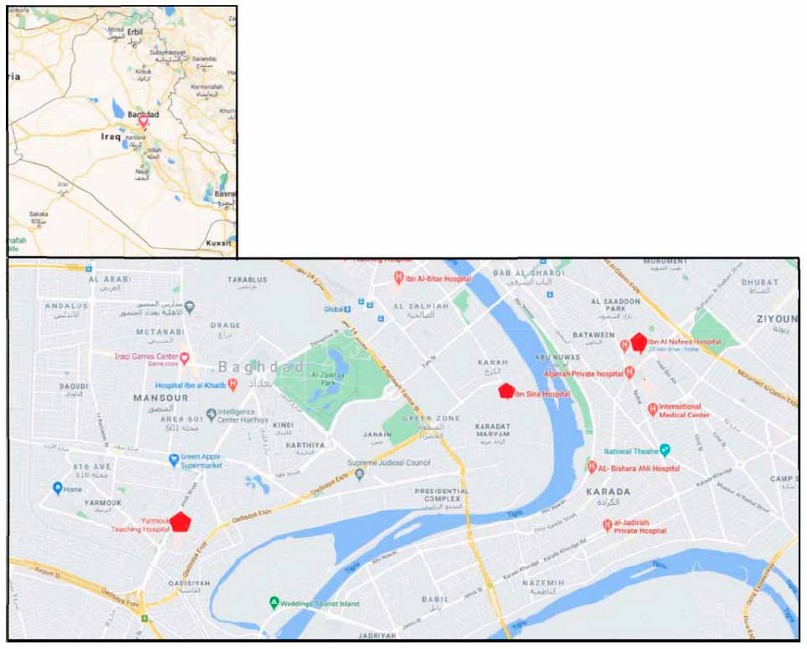
Figure 1. Shows the selected study areas within the city of Baghdad.
Method
Samples were collected between October 2018 and September 2019 and then physical, chemical, and bacteriological characteristics were studied, including pH value (pH), Turbidity, Total Dissolved Solids (TDS), Chloride (Cl-), Total Hardness (T.H.), Calcium (Ca), Magnesium (Mg), Aerobic Plate Count (APC), Coliform Bacteria, Faecal Coliform, and Faecal Streptococcus Bacteria), was tested by Baghdad Government in accordance to standard methods for the examination of drinking water. The tests of TDS and pH were measured on-site at the sampling position, and the other tests were done in the laboratory according to Standard Methods for the Examination of Water and Wastewater to 8.
Samples were collected between October 2018 and September 2019 and then physical, chemical, and bacteriological characteristics were studied, including pH value (pH), Turbidity, Total Dissolved Solids (TDS), Chloride (Cl-), Total Hardness (T.H.), Calcium (Ca), Magnesium (Mg), Aerobic Plate Count (APC), Coliform Bacteria, Faecal Coliform, and Faecal Streptococcus Bacteria), was tested by Baghdad Government in accordance to standard methods for the examination of drinking water. The tests of TDS and pH were measured on-site at the sampling position, and the other tests were done in the laboratory according to Standard Methods for the Examination of Water and Wastewater to 8.
RESULTS
pH value (pH)
The results showed that the highest value was 8.4 in January in Ibn Sina Hospital, while the lowest was 6.4 in Ibn-Al-Nafis Hospital in July Figure 2, Table 1.
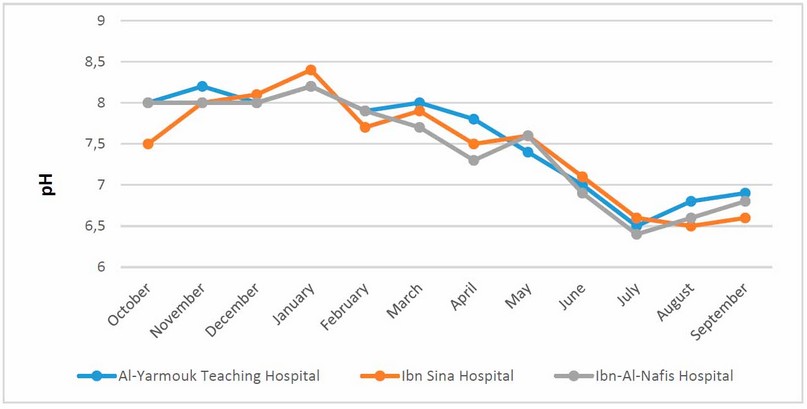
Figure 2. pH values during the study period.
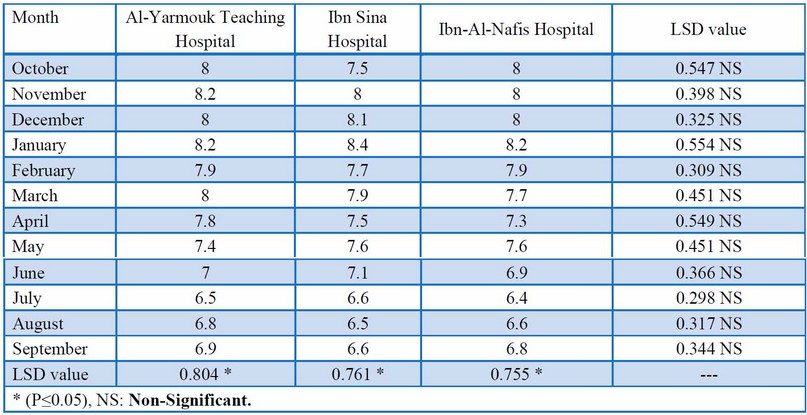
Table 1. pH values during the study period.
Total Dissolved Solids (TDS)
The maximum concentration was 790 mg-1 in December, while the minimum was 378 mg-1 in July (Figure 3, Table 2).
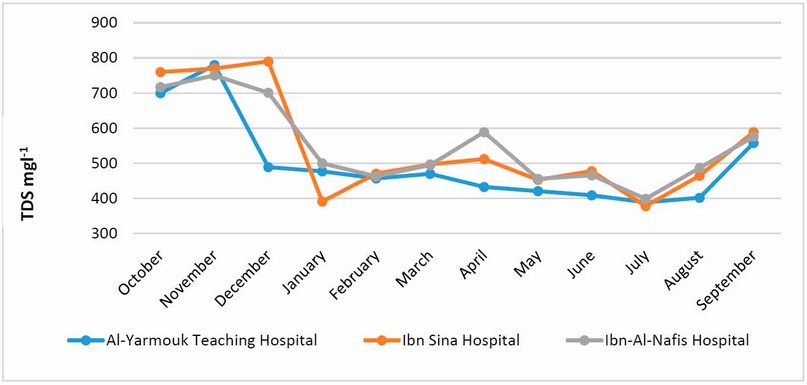
Figure 3. TDS (mg-1) values during the study period.
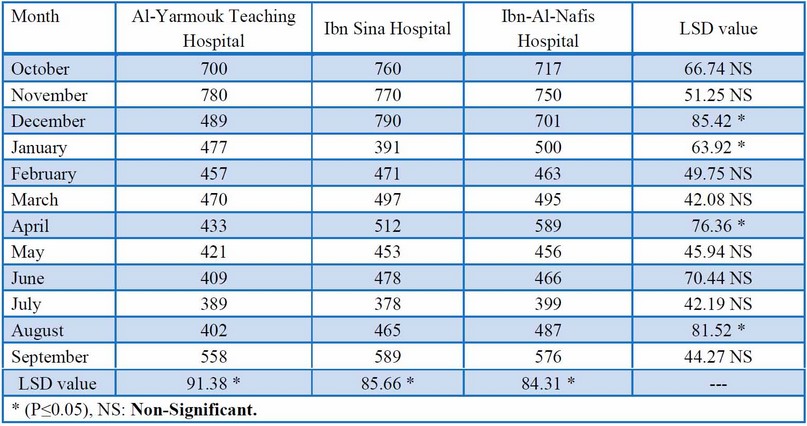
Table 2. TDS (mg-1) values during the study period.
Turbidity
This study found that the water samples of Al-Yarmouk Teaching Hospital had the highest value, 8.7 NTU, in January, while the water samples of Ibn-Al-Nafis Hospital gave the lowest value, 1 NTU, in July (Figure 4, Table 3).

Figure 4. Turbidity (NTU) values during the study period.
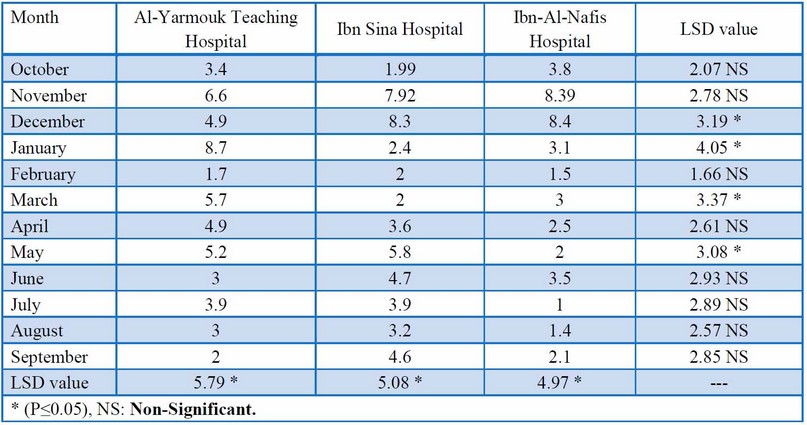
Table 3. Turbidity (NTU) values during the study period.
Total Hardness (T.H.)
The results of the current study showed that the maximum value of T.H. in the water samples found in Ibn Sina Hospital water was 690 mg-1 in January, while the minimum value found in Ibn Sina Hospital was 180 mg-1 in July Figure.5, Table 4.
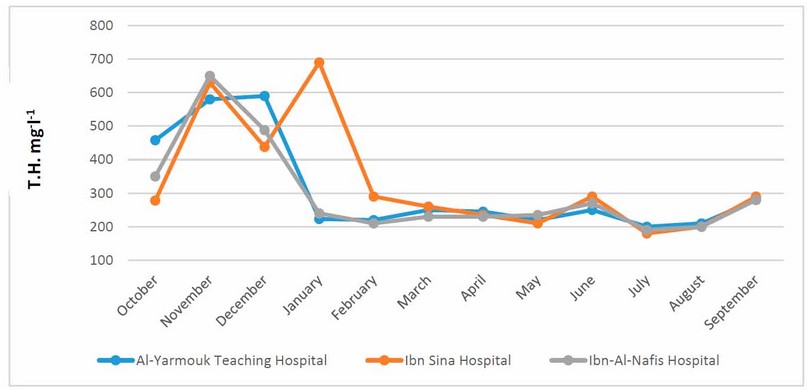
Figure 5. T.H. (mgl-1) values during the study period.
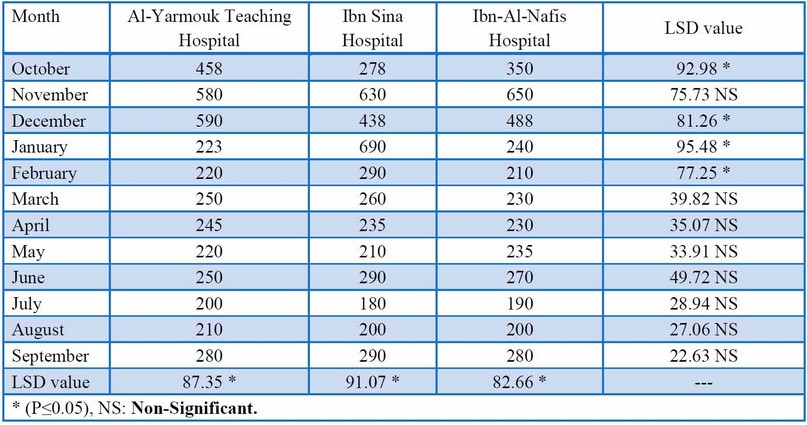
Table 4. T.H. (mgl-1) values during the study period.
Chlorides (Cl–)
The data from the water samples show that the highest value of Cl– found in Ibn Sina Hospital was 510 mgl-1in January, while the lowest mean value recorded in the Ibn Sina Hospital was 29 mgl-1in July Figure.6, Table 5.
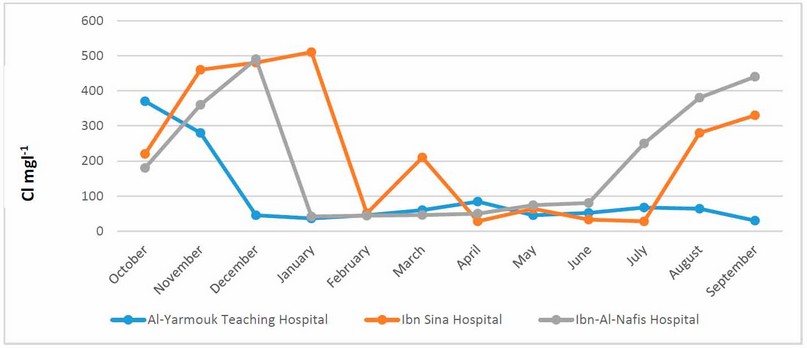
Figure 6. Cl–values (mgl-1) values during the study period.
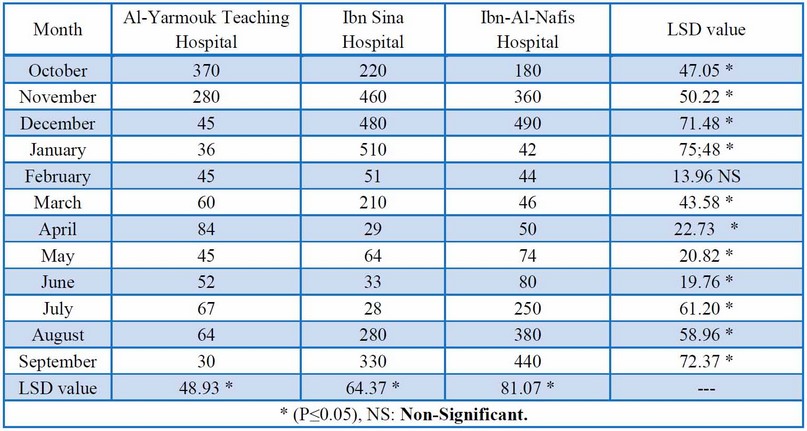
Table 5. Cl-values (mgl-1) values during the study period.
Magnesium (Mg+2)
The maximum concentration of Mg+2 was 105 mgl-1in Ibn Sina Hospital in January, while the minimum concentration was 20 mgl-1in Ibn Sina Hospital in July (Figure 7, Table 6).
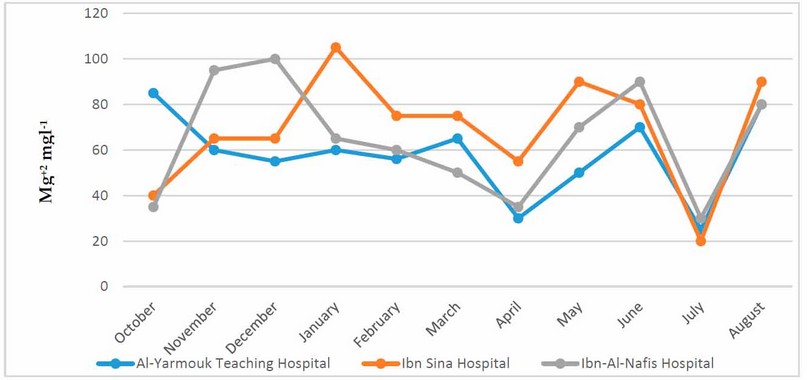
Figure 7. Mg+2 (mgl-1) values during the study period.
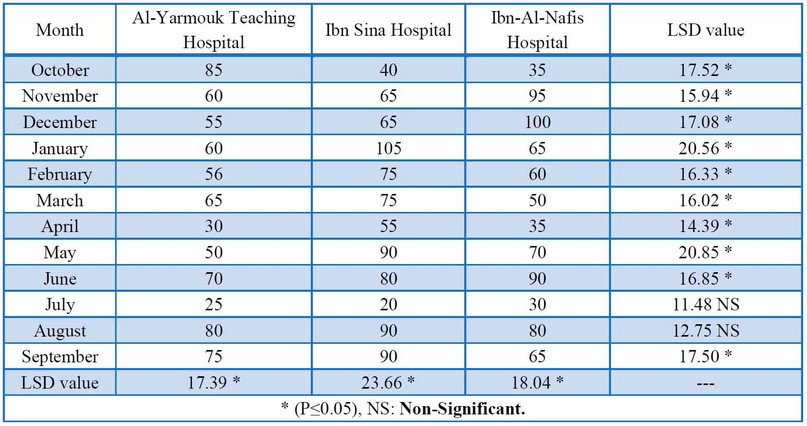
Table 6. Mg+2 (mgl-1) values during the study period.
These recorded values are over the allowable limits according to Iraqi standards 10 and WHO standards for drinking water 12, which was 150 mgl-1.
Calcium ion (Ca+2)
The maximum value of Ca+2 was 231.1 mgl-1in Al-Yarmouk Teaching Hospital during December. The minimum value was 10.5 mgl-1in Ibn-Al-Nafis Hospital during August. Figure.8, Table 7.
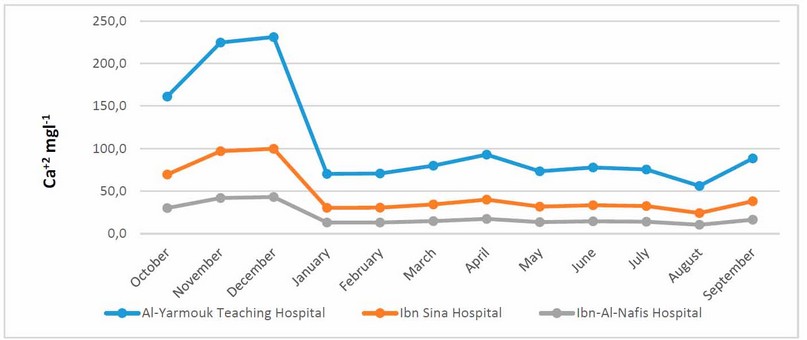
Figure 8. Ca+2(mgl-1) values during the study period.

Table 7. Ca+2(mgl-1) values during the study period.
However, these recorded values are within the allowable limits according to Iraqi standards 10 and WHO standards for drinking water 12, which was 200 mgl-1. The increase in calcium and magnesium in the water may be due to the presence of carbonates, which increases the water’s hardness. The results of the total hardness3 confirmed this.
Aerobic Plate Count (APC)
The obtained results showed that the highest value of APC was in November, at 38 cfu/ml in Ibn Sina Hospital, while the lowest value was in Ibn-Al-Nafis Hospital, at 1 cfu /ml in February (Figure 9, Table 8).
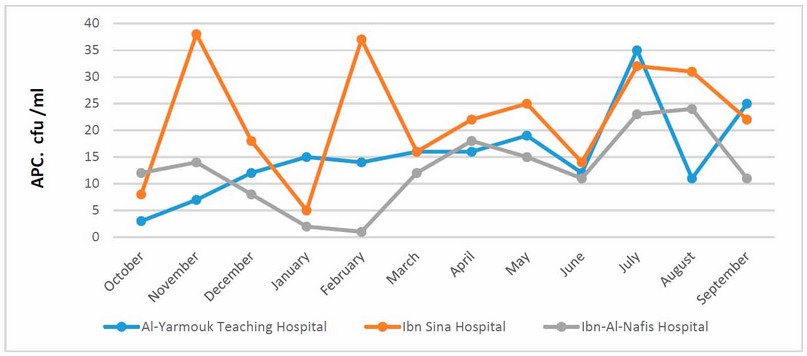
Figure 9. APC cfu /ml values during the study period.

Table 8. APC CFU/ml values during the study period.
Total coliform (T.C.)
In this study, it has been found that T.C. in water samples having a maximum mean value of 20 cfu /100ml was observed in December at the Al-Yarmouk Teaching Hospital, while the minimum mean value of 0 cfu /100ml was recorded in May at Ibn-Al-Nafis Hospital Figure.10, Table 9.
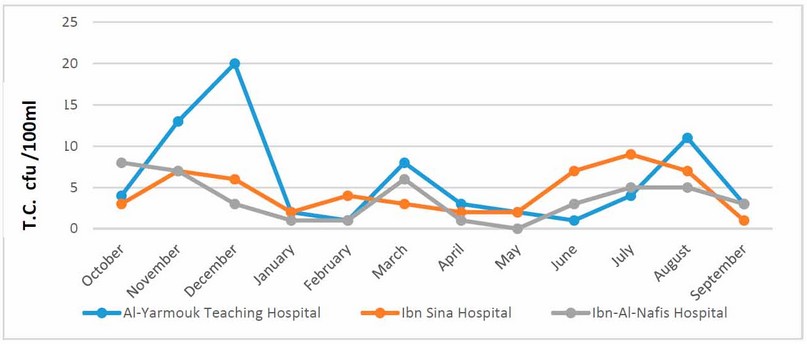
Figure 10. (T.C.) cfu /100ml values during the study period.
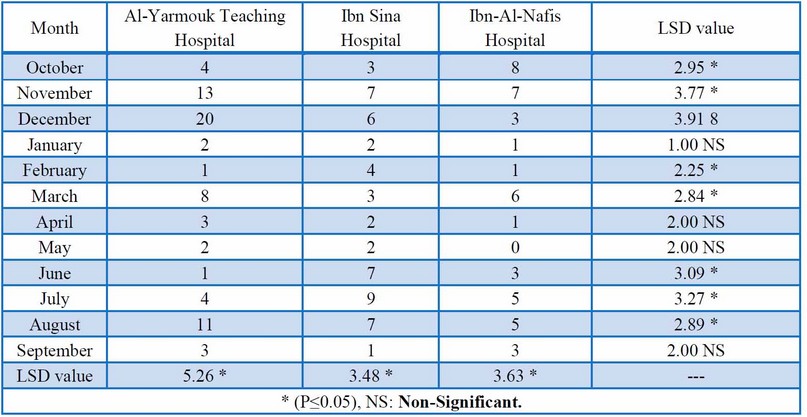
Table 9. (T.C.) cfu /100ml values during the study period.
Fecal Coliform (F.C.)
Current results revealed that the highest value of F.C. was found in Al-Yarmouk Teaching Hospital, with 16 cfu /100ml recorded during December. The lowest F.C. values were detected in many months; they were 0 cfu /100ml in all hospitals (Figure 11, Table 10).
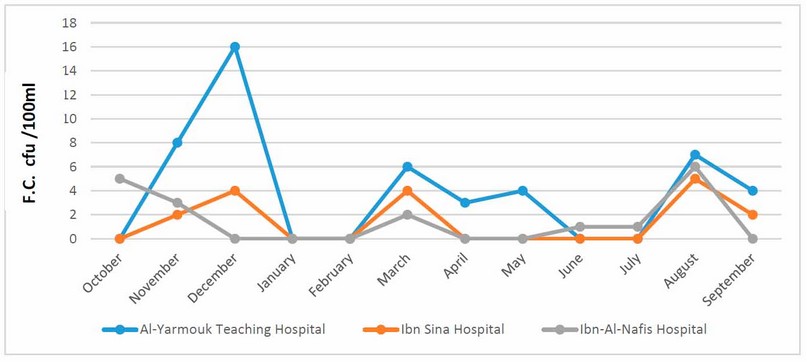
Figure 11. (F.C.) cfu /100ml values during the study period.
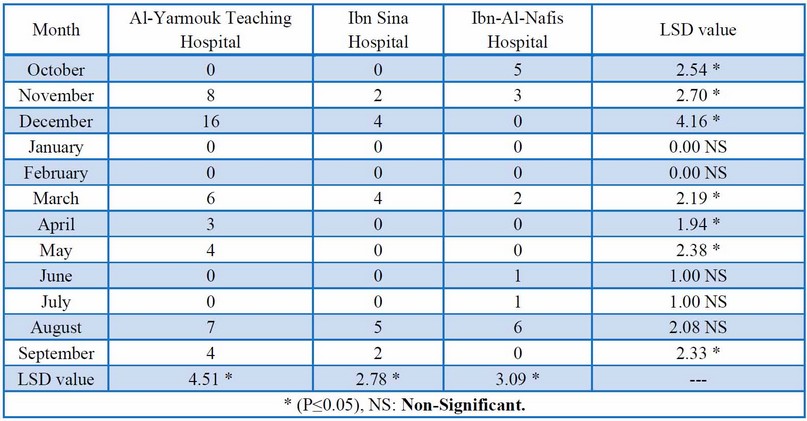
Table 10. (F.C.) cfu /100ml values during the study period.
Fecal Streptococcus (F.S.)
Current results revealed that the highest value of F.S. was found in Al-Yarmouk Teaching Hospital: 16 cfu /100ml, recorded during December. The lowest F.S. values detected in many months were 0 cfu /100ml in all hospitals (Figure 12, Table 11).
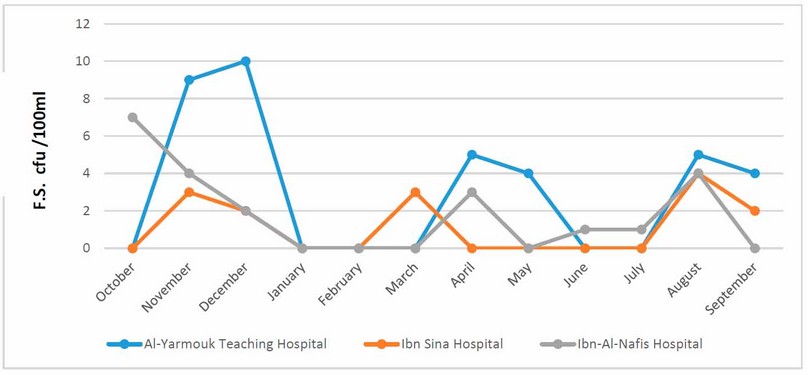
Figure 12. (F.S.) cfu /100ml values during the study period.

Table 11. (F.S.) cfu /100ml values during the study period.
DISCUSSION
In this study, neither the lowest nor the highest pH values obtained reached the allowable limits for Iraqi and WHO drinking water levels 8,12, ranging from 6.5 to 8.5. Furthermore, for TDS, the cracks and breaks of drinking water pipelines may increase TDS content, mainly when there is no pressure in the pipelines and using a house water pump 2. The present study registered the minimum and maximum TDS values, which were found to be within the permissible limits of Iraqi standards 9 and WHO for drinking water 12, which were 1000 mgl-1.
The high turbidity of drinking water may be caused by the low quality of purification efficiency caused by the age of the necessary filters for the treatment process and operation method in addition to the breaks and cracks in the net pipes which lead to a mix of drinking water with the surrounding environment with the net pipes 2. the operation method, the fitness of maintenance processes, the age of the plant, and the amount of article alum added have a significant influence on turbidity values in water 5.
The turbidity values recorded in the present study were higher than the permissible level recommended by the Iraqi standard 10 and WHO standard for drinking water12 for all seasons, which was 0 -5 NTU. While the T.H. values recorded in the present study were higher than the permissible level, especially in the autumn and winter months recommended by the Iraqi standard 11 and WHO standard for drinking water 13for all seasons, which was 500 mgl-1. The increase in hardness in the water is due to the presence of calcium and magnesium ions, and their purity is due to carbonates in the water3.
According to chloride source, the rainfall that leached with its substances and elements that form sources of Cl– such as organics leaks to the breaks in the distribution pipelines, which may cause the mixing of drinking water in the pipe with the liquids in the land that network of pipes pass through it, carrying many materials and salts 4. However, these recorded values are over the allowable limits according to Iraqi standards 10and WHO standards for drinking water 12, which was 350 mgl-1. Furthermore, regarding calcium, these recorded values are within the allowable limits according to Iraqi standards 10 and WHO standards for drinking water 12, which was 200 mgl-1. The increase in calcium and magnesium in the water may be due to the presence of carbonates in the water, thus increasing its hardness, and the results of the total hardness3 confirmed this. For Aerobic Plate Count (APC), the study results indicate that several samples of drinking water have exceeded 10 cfu /ml, which is the allowable limit for the validity of drinking water according to the Iraqi Criteria and Standards of Water’s microbial limits 11, which was 10 cfu /ml.
The Total coliform (T.C.) in drinking water samples is due to inadequate chlorination, insufficient contact time, and poor maintenance of service reservoirs, and maybe because of the re-growing of bacteria in the distribution system 13. The results of this study show that several drinking water samples exceeded the allowable limit for the validity of drinking water according to the Iraqi Criteria and Standards of water’s microbial limits 11, which is zero cfu /100ml. The occurrence of Fecal Coliform (F.C.) in the drinking water sample is proof of fecal contamination and an indicator that water becomes polluted inside the distribution system, and this may refer to a lack of cleaner in the storage tank or to defect in the pipelines which could be old or might be misused by consumers or the water has been contaminated through distribution 14.
The results of this study show that several drinking water samples have exceeded the allowable limit for the validity of drinking water according to the Iraqi Criteria and Standards of water’s microbial limits 11, which is zero cfu /100ml. This study coincided with previous studies of 5 which reported that the presence of bacteria in drinking water may be due to the lack of chlorine effects due to low levels of chlorine pumped into the network also to the breaks and cracks in the net pipes which may lead to a mix of drinking water with polluted water resulted from the cracks in the sewage net pipes or groundwater 15,16.
The current study results show that several drinking water samples have exceeded the permissible limit of Fecal Streptococcus (F.S.) for the validity of drinking water according to the Iraqi Criteria and Standards of water’s microbial limits 11, which is zero cfu /100ml.
CONCLUSIONS
The results of the study showed that pH, Total Dissolved Solids (TDS), and Calcium ion (Ca+2) recorded values are within the allowable limits according to Iraqi standards (2009) and WHO standards (2011) for drinking water. While Turbidity, Total Hardness (T.H.), Chlorides (Cl-), Magnesium (Mg+2), Aerobic Plate Count (APC), Total coliform (T.C), Fecal Coliform (F.C.) and Fecal Streptococcus (F.S.).The values recorded in the current study were higher than the permissible level recommended in the Iraqi Standard (2009) and the World Health Organization (2011) standard for drinking water for all months and some months.
Author Contributions: The physical and chemical factors were measured in the Ministry of Science and Technology, and the bacterial factors were measured in the College of Science / University of Baghdad by the second and third researchers. In contrast, the first researcher wrote the research.
Funding: This research received no external funding.
Acknowledgments: This study was supported by the University of Baghdad/College of Science, Ministry of Science and Technology.
Acknowledgments: I sincerely thank the conference supervisor, Dr. Aqeel and Dr. Harith, for their patience and endurance among the researchers.
Conflicts of Interest: The authors declare no conflict of interest.
REFERENCES
1. Al-Hashimi, H.H.H. Quality Study for Drinking Water in Some Regions of Baghdad Area Ph.D. Thesis. College of Science, University of Baghdad, Iraq. 2012.
2. Al-Fatlawy, Y.F.K. Study of drinking water quality for some water project in Baghdad .Ph.D. Thesis College of the Science University of Baghdad, Iraq. (In Arabic). 2007.
3. Al-Nuaimi Amer Fadel Daoud, Mahdi Hatem Diwan, and Wasfi Muhammad Kazem. Study of some physical and chemical properties of drinking water in Baladrooz district.Diyala For pure science, 2010. Vol: 6 No: 4, ISSN: 1992-0784.
4. Al Shalchi, T.K. Evaluation of Environmental Impact of Tigris River Pollution (Between Jadirriya and Dora Bridges). MSc. Thesis College of Engineering, University of Baghdad, Iraq. 2006.
5. Al-Tmemy, W.B.M. Investigation of Drinking Water Quality in Al-Haay and Al-Bashaar Water Treatment Plants in Wasit Province Southern Iraq. MSc. Thesis. University of Baghdad, Iraq. 2014.
6. Al-Zubaidi, A.N.H. A study of Al-Kut and Al-Karama Water Treatment Plants Efficiency to Purify the Drinking Water in Al-Kut City. MSc. Thesis. University of Baghdad, Iraq. 2011.
7. Al-Rawi, K.F., Ali, H.H., Guma, M.A., Alaaraji, S.F.T., Awad, M.M.The Relationships of Interleukin-33, Ve-Cadherin and Other Physiological Parameters in Male Patients with Rheumatoid Arthritis (2022) Pertanika Journal of Science and Technology, 30 (1), pp. 123-140.
8. Omar Khaled Attallah, Thafer Thabit Mohammed and Nasr Nuri Al-Anbari. Effect of Adding Grape Pomace and Resveratrol on Some Physiological Traits and Gene Expression to Prevent Hemorrhagic Fatty Liver Syndrome in Laying Hens . IOP Conference Series: Earth and Environmental Science.2022, 1060 (1), 012076. doi:10.1088/1755-1315/1060/1/0120
9. AL-Qudsi, A., S. Alamili, H. Effect Of Using Sunflower And Canola Oils In Common Carp (Cyprinus Carpio L.) Diets On Growth Parameters, Feed Utilization And Body Composition. Anbar Journal Of Agricultural Sciences, 2023; 21(1): 95-104. doi: 10.32649/ajas.2023.179719.
10. Iraqi Criteria and Standard of Waters Chemical Limits, ICS/13.060.20 number 417/2009, second update.2009.
11. Iraqi Criteria and Standard of Waters Microbial Limits, ICS/7.100.20/2011 number 2270/14, first update.2015.
12. WHO, World Health Organization . Guidelines for Drinking Water Quality» 4th ED Geneva 27, Switzerland. 2012.
13. Zain, H.. The Effect Of Using Different Vitamin E Levels On The Antioxidant Status Of Broiler Chickens. JLSAR 2023, 4.
14. Salih, N.Y. Evaluation of Municipal Water Quality and Health Risks of Trihallogen Organic Compounds in Baghdad. Thesis.College of Science, University of Baghdad, Iraq. 2016.
15. Bibani, N. M. S., Khidhir, Z. K., Shaker, A. S., Kirkuki, S. M. S. & Abdulateef, S. M. Analyses of mycotoxins in broiler’s local and imported feeds. Iraqi J. Vet.2019 Sci. 33.
16. World Health Organization. Hospitals in the 15 centers/south governorates of Iraq. Geneva, Switzerland. 2002.
Received: 26 September 2023 / Accepted: 15 April 2023 / Published:15 December 2023
Citation: Al Fatlawy, Y.; Kadhim, F.; Mahdii, B. Evaluation of the Drinking water in some Hospitals in Baghdad. Revis Bionatura 2023;8 (4) 52. http://dx.doi.org/10.21931/RB/2023.08.04.52



















